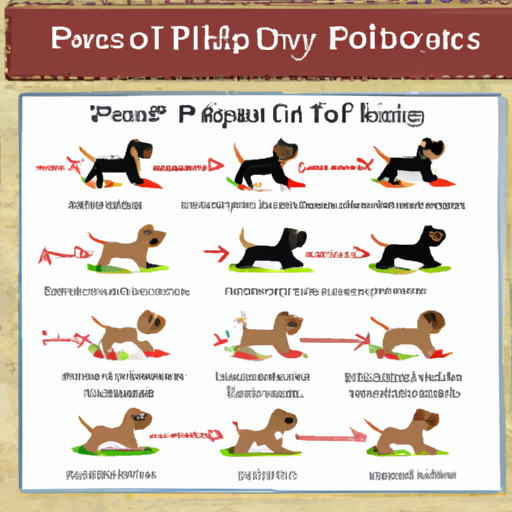Taking care of a puppy is an exciting, rewarding journey. You are a caregiver, a guide, and a partner in your puppy’s growth. One of the key areas in this journey is exercise. Adequate exercise is essential for your puppy’s physical health, mental stimulation, and behavior training. This article will provide a comprehensive guide on puppy exercise, including an easy-to-follow puppy exercise chart.
Understanding Your Puppy’s Exercise Needs
Your puppy’s breed, age, and health will determine the amount of exercise they need.
- Small breed puppies like Chihuahuas or Pomeranians require less exercise compared to large breed puppies like Retrievers or Shepherds.
- Puppies under 5 months have lots of energy, but their bones and joints are still developing. Over-exercising can cause physical damage.
- Health conditions can affect your puppy’s exercise needs. Always consult with your vet if your puppy has any health issues.
Age-Specific Puppy Exercise Chart
Here is a general guideline for your puppy’s exercise needs based on their age:
| Age (months) | Exercise (minutes per day) |
|---|---|
| 3-4 | 15-20 |
| 4-6 | 20-30 |
| 6-9 | 30-45 |
| 9-12 | 45-60 |
Remember, these are just guidelines. Always observe your puppy and adjust as necessary.
Types of Puppy Exercise
There are several types of exercises that you can engage your puppy in, each with its benefits.
- Walks: Walking is a gentle exercise suitable for puppies of all ages. It also helps to socialize them.
- Fetch Games: Fetch games are excellent for working off a puppy’s energy. They also help to teach your puppy to follow commands.
- Tug-of-War: Tug-of-war is a fun game that can train your puppy’s strength. However, it’s essential to teach your puppy to let go on command.
Structuring Your Puppy’s Exercise Schedule
Having a consistent schedule is essential for your puppy’s routine.
- Morning Exercise: A short walk or a game of fetch can help your puppy start the day off right.
- Afternoon Exercise: This should be the longest exercise period of the day. Consider a long walk, playtime, or even puppy training classes.
- Evening Exercise: A short walk or gentle playtime can help your puppy wind down for the night.
Incorporating Training into Exercise
Exercise is an excellent opportunity for training.
- Reinforce basic commands like “sit”, “stay”, or “come” during playtime.
- Use fetch games to teach your puppy to “drop it” or “leave it”.
- Always reward your puppy with praises, petting, or treats for following commands.
Ensuring Your Puppy’s Safety During Exercise
Safety should be your top priority during exercise.
- Ensure your puppy is vaccinated before taking them to public places.
- Always keep your puppy on a leash unless in a secure area.
- Avoid intense exercise in high heat to prevent heatstroke.
- Monitor your puppy for signs of exhaustion, like excessive panting, and give them plenty of breaks.
Adjusting Exercise as Your Puppy Grows
As your puppy grows, their exercise needs will change.
- Puppies that are growing into adolescence (around 6-12 months) will need more exercise.
- After your puppy reaches adulthood (around 1 year), they may require less intense exercise.
- Always adjust the exercise routine based on your dog’s energy level and health.
Frequently Asked Questions
Q: What if my puppy doesn’t want to exercise?
A: It’s normal for puppies to have lazy days. However, if your puppy consistently refuses to exercise, consult with your vet. It might be a sign of health issues.
Q: Can I take my puppy for runs?
A: Puppies under one year should not go for runs, as their joints are still developing. Stick to walks and playtime.
Q: How do I know if I’m over-exercising my puppy?
A: Signs of over-exercise include excessive panting, difficulty standing up or walking, loss of appetite, and lethargy. If you notice these signs, reduce the exercise and consult your vet.
Remember, every puppy is unique, and these guidelines may not perfectly fit your puppy’s needs. Always observe your puppy’s behavior, consult with your vet, and adjust as necessary. With the right balance of exercise, your puppy will grow into a healthy and happy dog.



